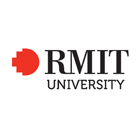Bachelor of Aviation (Pilot Training)
- Home
- Courses
- RMIT University (Royal Melbourne Institute of Technology University)
- Bachelor of Aviation (Pilot Training)
Bachelor of Aviation (Pilot Training)
Prepare for a successful career in the skies. Undertake flight training at one of two airfields, gain a strong understanding of the global aviation industry and become a pilot. With RMIT’s Bachelor of Aviation (Pilot Training), you’ll build the skills to critically review and analyse all aspects of the aviation…
Categories
COURSE DESCRIPTION
Prepare for a successful career in the skies. Undertake flight training at one of two airfields, gain a strong understanding of the global aviation industry and become a pilot.
With RMIT’s Bachelor of Aviation (Pilot Training), you’ll build the skills to critically review and analyse all aspects of the aviation industry, and learn how to work both individually and in teams to solve real industry issues.
Providing a mix of theory and practical experience, this industry-led degree will equip you with problem solving, communication and leadership skills, preparing you for a career as a professional pilot in this growing industry.
In addition to extensive theory work, this degree includes flight training. This training will assist you to gain a Recreational (RPL), Private (PPL), and Commercial Pilot Licence (CPL), which enables you to fly commercially within Australia.
Career:
The Bachelor of Aviation (Pilot Training) will equip you with the skills to become a commercial pilot.
Your flight training includes a Recreational, Private, and Commercial pilot licence (RPL/PPL/CPL). These are Civil Aviation Safety Authority (CASA) licences and enable you to fly commercially within Australia.
RMIT graduates are highly employable. Many of our recent graduates have gone on to hold senior roles with major airlines such as:
Qantas
Virgin Australia
Cathay Pacific
Oman Air
Air China.
EDUCATIONAL INSTITUTION
Since its establishment in 1887, Royal Melbourne Institute of Technology University (RMIT) has been meeting the needs of the community surrounding it. Originally a Working Men’s College, RMIT showed its flexibility during World War Two, training over 20,000 servicemen in communications to help with the war effort.Now, it is a true pioneer in international education, championing cross-border study opportunities with campuses in various countries. Granted formal university status in 1992, RMIT is ranked 21st in the world for universities that are less than 50 years old.RMIT is the largest higher education institution in Australia, currently with more than 82,000 students. With nearly 20% of those students coming from overseas, it is a university that truly welcomes diversity and is a melting pot of different cultures. RMIT has three campuses in Vietnam, a European hub in Barcelona, an office in Indonesia, and partners with 200+ institutions in 42 countries to provide study opportunities worldwide.
Since its establishment in 1887, Royal Melbourne Institute of Technology University (RMIT) has been meeting the needs of the community surrounding it. Originally a Working Men’s College, RMIT showed its flexibility during World War Two, training over 20,000 servicemen in communications to help with the war effort.
Now, it is a true pioneer in international education, championing cross-border study opportunities with campuses in various countries. Granted formal university status in 1992, RMIT is ranked 21st in the world for universities that are less than 50 years old.
RMIT is the largest higher education institution in Australia, currently with more than 82,000 students. With nearly 20% of those students coming from overseas, it is a university that truly welcomes diversity and is a melting pot of different cultures. RMIT has three campuses in Vietnam, a European hub in Barcelona, an office in Indonesia, and partners with 200+ institutions in 42 countries to provide study opportunities worldwide.




